Brad Smith, SSC Public Affairs
As director of Launch and Range Operations for Space Systems Command (SSC), Space Force Brigadier General Kristin L. Panzenhagen is responsible for organizing, training, and equipping 22,000 government and contractor personnel at installations from California to Florida.
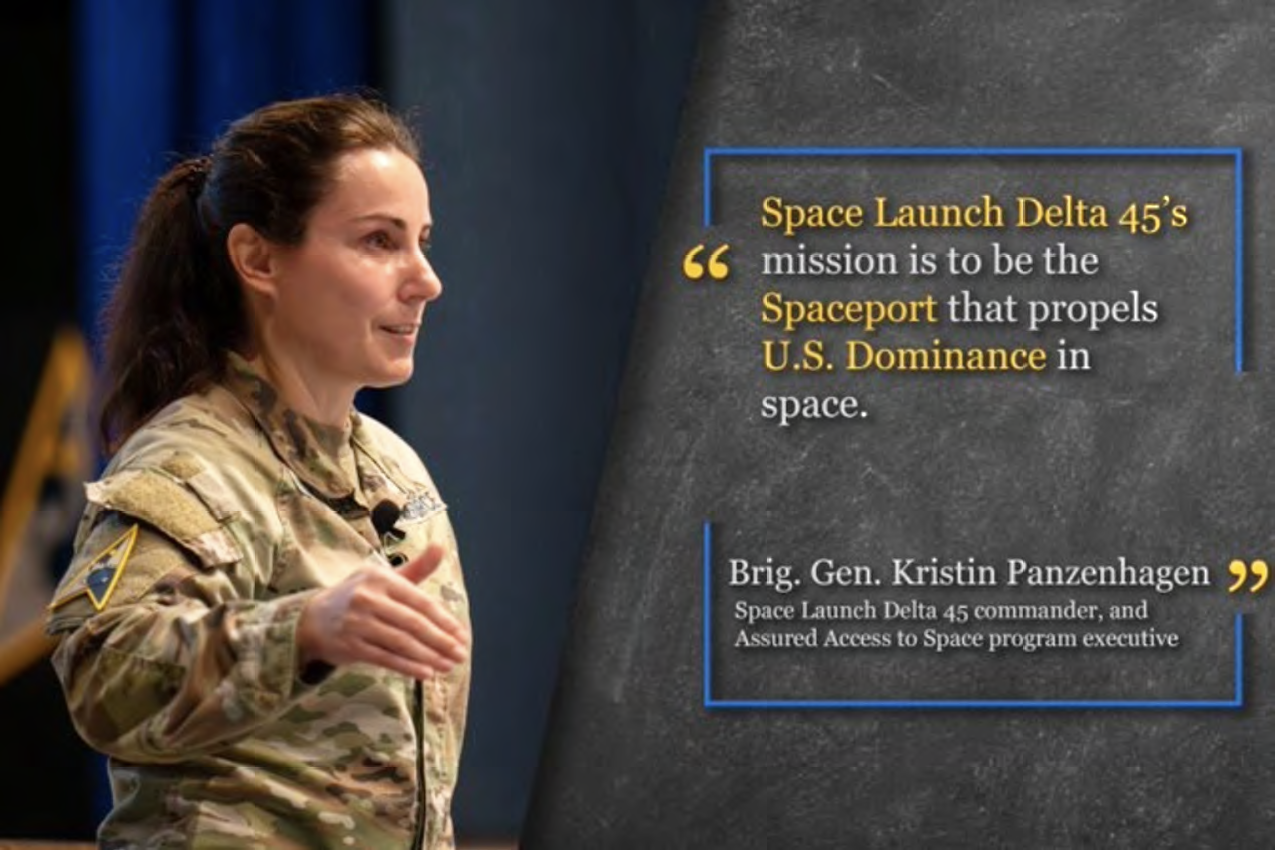
Her organization, part of the United States Space Force (USSF), manages the launch centers at both Vandenberg Space Force Base (VSFB) and Patrick Space Force Base/Cape Canaveral Space Force Station. Combined, they handle the majority of all space launches in the United States, whether the Department of Defense (DoD)’s national security missions, U.S. government civil space efforts, or commercial industry. The team also supports NASA’s launches from both coasts.
In addition to overseeing the safe launch of spacecraft ranging from military reconnaissance satellites to NASA’s scientific probes to commercial comsats, the Launch and Range Operations team’s responsibilities include some very basic needs.
“I care about wastewater. I care about the duct banks that protect our fiber optics. I care about power, and roads and bridges—it’s not ‘just’ rockets; there’s a lot of other things thatwe’re responsible for,” said Panzenhagen, an aeronautical and astronautical engineer who has served in the military for more than two decades. “We—Space Systems Command—are the acquisition piece of it, and we are also the operational piece of it: providing the spaceports and the range capability to do the launch mission—and that’s whether or not it is the national security space launch mission.”
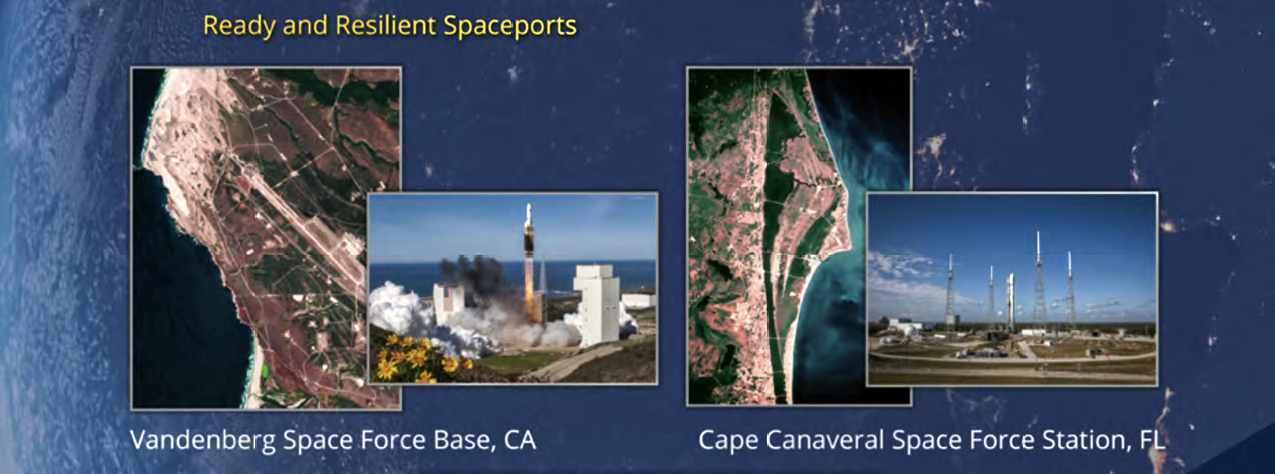
Panzenhagen wears multiple “hats,” including serving as program executive officer (PEO) for SSC’s Assured Access to Space (AATS) organization; as commander of Space Launch Delta (SLD) 45, the USSF unit based at Patrick Space Force Base (SFB) in Florida; and as director of the Eastern Range (ER), which extends more than 10,000 miles from Florida through the South Atlantic and into the Indian Ocean.
She also has responsibilities for the Western Range (WR), with headquarters at Vandenberg SFB, which extends from the California across the Pacific and Indian oceans. Both facilities are used for a variety of government and non-governmental programs, which leads to real benefits for the Space Force in terms of efficiency and reliability, officials said.
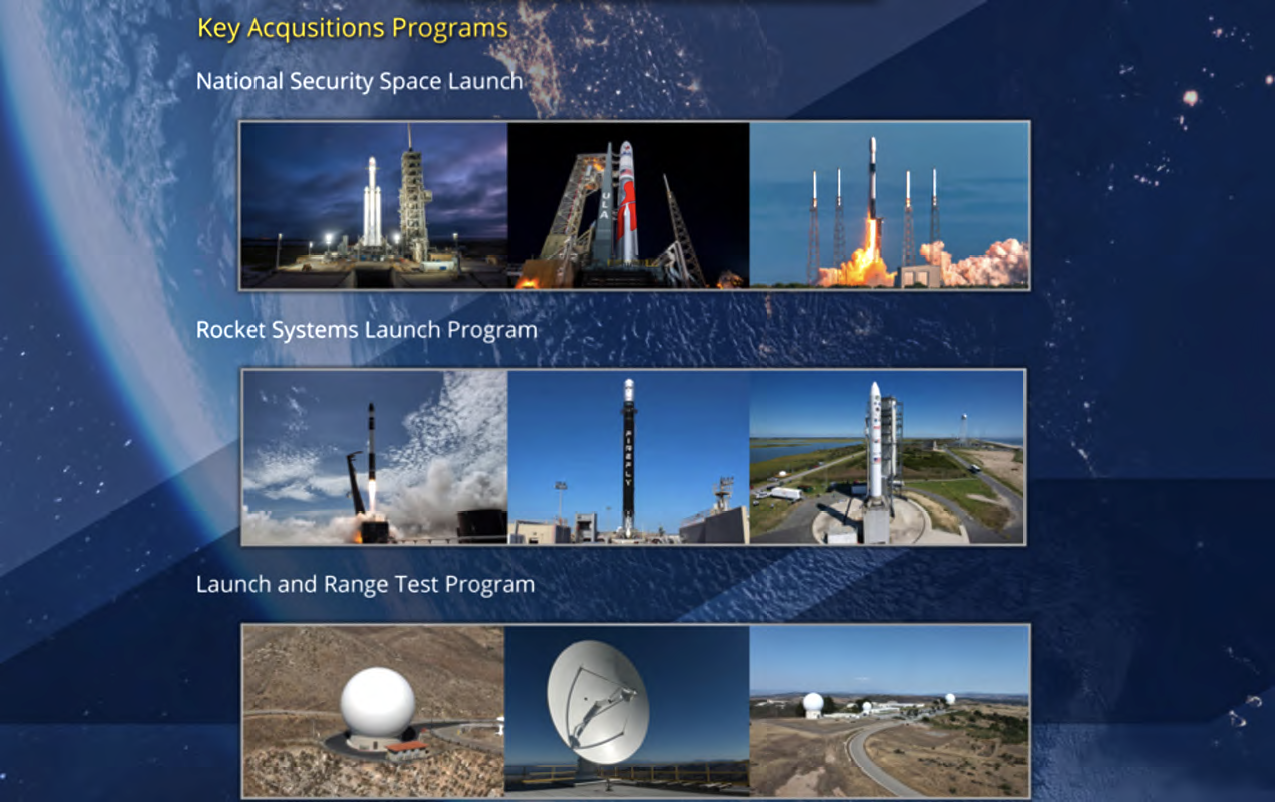
“Our partnerships allow us to deliver capability more rapidly to the joint force,” said Lieutenant General Philip A. Garrant, SSC’s commander, whose responsibilities include Panzenhagen’s launch organization. “Commercial industry has already done a lot and continues to be a critical partner. SSC’s partnership with industry has led to some incredible achievements.”
Along with the on-going mission assurance and launch responsibilities at the two federal spaceports, Panzenhagen’s staff is responsible for currently delivering on more than $1.3 billion in infrastructure upgrades and construction, which encompass everything from roads and bridges to power and water.
“I do want to emphasize there is more than enough capacity for what we need to do for national security,” Panzenhagen said. “What we’re trying to make sure we have the capacity for is to support the needs of the launch service providers that are also launching commercial missions because we—meaning the Space Force—get a lot of benefit from that.”
The benefits to the DoD and the United States of allowing all types of launches at the two ranges are significant, Panzenhagen said.
Panzenhagen added, “We get benefit from (Launch Service providers) smoothing out their processes, benefit from the research and development they’re doing in order to launch those missions, and benefit from the infrastructure that they’re investing in at the spaceports. When we talk about needing to increase capacity at the federal ranges, that’s what we’re talking about.”
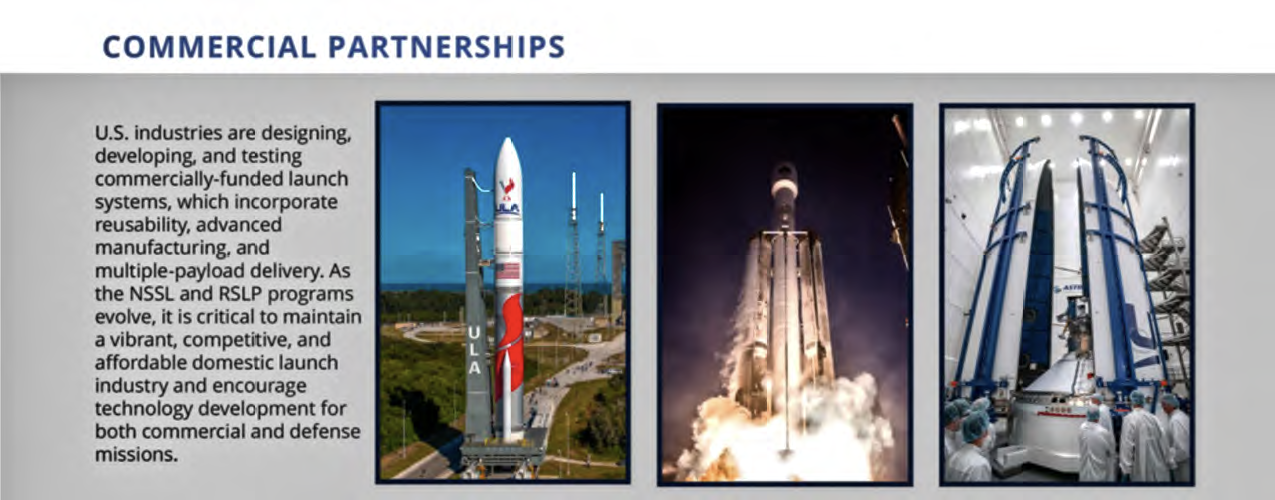
___________________________________
Resilient and Ready Spaceports
___________________________________
The needs are obvious: the Space Force supported a record 93 launches from either Kennedy Space Center or Cape Canaveral Space Force Station in 2024, up from 72 in 2023.
At Vandenberg, 2024’s launches totaled 51, a new record and an increase of 35% over the previous year. Planners forecast as many as 156 launches from Florida in 2025, with as many as 70 in California during 2025.
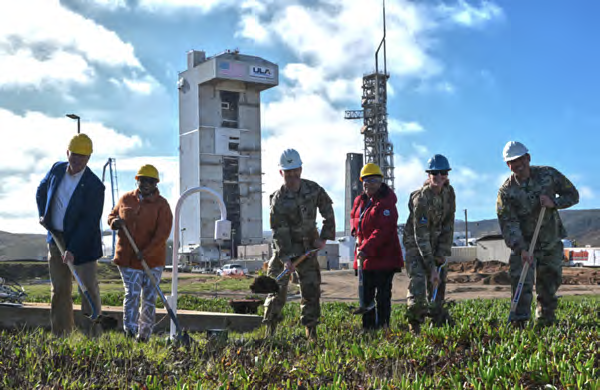
U.S. Space Force Col. Mark Shoemaker, Space Launch Delta 30 commander, middle, alongside Vandenberg SFB leadership and project managers, join for a groundbreaking ceremony at Space Launch Complex 3 to mark the beginning of the Vandenberg Atmospheric Detection of an Electrified Range project at Vandenberg Space Force Base, Calif., March 4, 2025. The project will undergo the release of 14 electric field mills across base to enhance lightning detection for safer, more efficient launch operations by improving Lightning Launch Commit Criteria assessments. (U.S. Space Force photo by Senior Airman Kadielle Shaw)
The reasons for the capital improvement projects at each base is equally obvious: both installations were designed and built as test centers in the early years of the Cold War and have developed into the operational facilities they are today, the busiest spaceports in the world, in fits and starts, as the number of launches has grown.
“First of all, our infrastructure is old,” Panzenhagen said. “Some of it, on the Cape side of the house, especially, was built in the 1950s and 1960s, and because it’s old, a lot of it is not sized for the rockets we’re launching today.”
There’s also the underlying reality that, because both complexes are on the coast for safety, the infrastructure each depends on is subject to the ravages of salt air, sea spray, and the weather common to the Atlantic and Pacific coasts.
“We have a huge corrosion issue,” Panzenhagen said. “It is very hard to keep your infrastructure up and running when you are in a The Eastern Range, headquartered at Patrick SFB on Florida’s Atlantic coast, supports the space launch facilities at Patrick, Cape Canaveral Space Force Station, and NASA’s Kennedy Space Center.
_______________________
Eastern Range Needs
_______________________
The Eastern Range, headquartered at Patrick SFB on Florida’s Atlantic coast, supports the space launch facilities at Patrick, Cape Canaveral Space Force Station, and NASA’s Kennedy Space Center.
The Space Force’s Space Launch Delta 45, or SLD 45, is the military unit that supports the two military installations (about 18,000 acres in total), and—at times—through some of the worst weather imaginable.
“We had a hurricane at the Cape (last year); the hurricane hit Wednesday into Thursday, we had the range ready to go on Saturday and we launched on Sunday,” Panzenhagen said. “Resiliency is extremely important to make sure that - again— as a nation we have assured access to space. We need to be able to operate through a conflict scenario, and we need to operate through a natural disaster.”
Resiliency projects run from “hardened” structures with redundant power and water systems that can weather a hurricane, to “vertical” construction projects that replace existing assembly and administrative structures, moving those functions away from launch facilities to increase safety and allow for 24/7 operations.
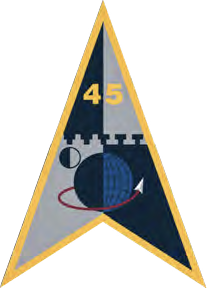
“Rockets are bigger now, so the ‘clear’ areas are bigger than they used to be; if we have a fueled rocket and the people are in the building next door must stop what they’re doing and leave - that is not an efficient way to do operations,” Panzenhagen said. “We are co-locating all of those more administrative and lab type facilities well away from the clear zones of the rockets, so we can have continuous operations.”
Other projects under consideration include transportation improvements, ranging from the network of roads and bridges on the bases to the railways, airfield, and harbor that serve the bases, as well as water conveyance and wastewater treatment facilities. In addition, as both launch complexes are close to federally- or state- protected parkland, beaches, and wildlife refuges, conservation and environmental issues are significant.
“There is a lot of water required to launch a rocket and then you got to do something with that water afterwards,” Panzenhagen said. “I have learned way more about water and wastewater and nutrient rich water in the last year than I thought I ever would, but these are extremely important things for us to do responsibly.”
Projects currently underway at Patrick and Cape Canaveral include:
• Consolidated communications center
• Repaired communications duct banks
• New water and wastewater mains
• Relocated weather operations facilities
• Redundant power distribution systems
• Emergency power generation system
Those planned for the near future include:
• Consolidated headquarters facility
• Consolidated launch support facility
• Consolidated Cape munitions storage
• Warehouse facilities
_______________________
Western Range Needs
_______________________
The Western Range is centered on Vandenberg SFB on California’s Central Coast; Space Launch Delta 30, or SLD 30, is the military unit that supports the installation.
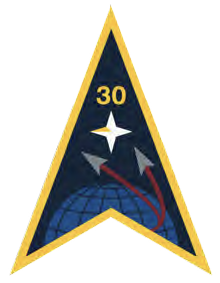
Vandenberg SFB covers more than 115,000 acres of California’s rugged Central Coast, unlike the compact Florida bases, which poses some challenges of its own when it comes to infrastructure, officials said.
“Vandenberg’s vast expanse is one of our greatest assets and a unique challenge,” said Colonel Mark Shoemaker, commander of Space Launch Delta 30, responsible for the base’s spaceport and Western Range. “We have unparalleled potential for growth, but it also means we’re constantly innovating to efficiently manage and secure such a sprawling installation.”
Like Patrick and Cape Canaveral in the early days of the Cold War, Vandenberg was planned as a missile test and development center; the base has since developed into an operational space launch center that is second only to the Florida complex in terms of launch operations. Vandenberg’s launches are a similar mix of military, governmental civil, and industry satellites, which poses some specific challenges simply because of the mix.
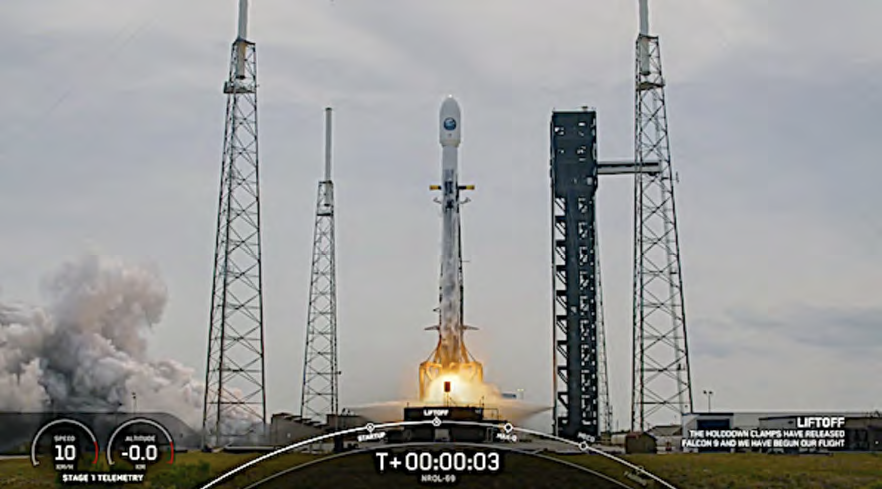
On Monday, March 24 at 1:48 p.m. ET, Falcon 9 launched the NROL-69 classified mission from Space Launch Complex 40 (SLC-40) at Cape Canaveral Space Force Station. The weather officials had projected a good day for a launch, with a 90% chance of favorable weather conditions at the time of the launch. Officials had been monitoring weather conditions with concerns related to Thick Cloud Layers Rule. The National Reconnaissance Office (NRO) and U.S. Space Force Space Systems Command (SSC) partnered to launch NROL-69 on a SpaceX Falcon 9 rocket through the National Security Space Launch (NSSL) program. This mission carried a national security payload designed, built, and operated by NRO.
“As the Western Range evolves to meet the demands of the modern space era, we’re reimagining how a spaceport operates across an installation larger than most cities. One of our primary challenges is the bottleneck in payload processing space,” Shoemaker said. “We’re balancing the needs of military, government, and commercial partners, all of whom are using the same facilities. This becomes particularly complex when payloads require different processing standards—from varying clean room specifications to distinct security protocols—which consumes a significant amount of our limited space resources.”
In 2024, Space Force was able to obtain extra funding from Congress to pursue commercial solutions to increase payload processing for the Western Range. A similar request, to address the same issue in Florida, is planned for 2025.
Projects currently in early planning and design at Vandenberg include:
-
• Rebuilding the air traffic control tower and fire station to modern requirements
• Building a new Entry Control Facility for the South Base
• Improving the resilience of the electrical power grid
• Overhauling the harbor to support ships delivering larger rockets
• Expanding the core roads on South Base to accommodate the expected increase in heavy vehicle and rocket transportation traffic
• Variety of safety improvements to handle Vandenberg’s unique fire risks.
________________
A Look Ahead
________________
The Space Force has listed the various capital improvement projects under the umbrella ‘Resilient and Ready Spaceports,’ along with spaceport operations and defense-focused needs over the next decade.
“We did get a $1.3 billion increase that covers the list up from 2024 to 2028, specifically for infrastructure, and so far we’ve been doing fantastic,” Panzenhagen said. “We are staying on track with the road map that we have. Currently, we have about 29 projects on contract already, for more than $80 million.”
Some projects are already under construction; others are in the planning, design, or solicitation stages, with planned construction starts ranging from FY 2025 to FY 2034.
Like any construction management project, the need for architects and engineers to design the project, and then variables of construction material and labor costs over a decade, can make a huge difference in the final costs, officials said. Competition for skilled labor in a regional market can make a huge difference as well. In the Orlando area in Florida, for example, several large resort and recreation projects are planned for construction in the same period.
“In 2027 and 2028, we’re going to see an especially big ramp-up in construction,” Panzenhagen said. “Our demand for architecture, engineering, and construction services is going to be consistent over several years, so making sure we have the workforce in place, ready to meet that demand, is very important to us.”
Space Systems Command is the U.S. Space Force field command responsible for acquiring, developing, and delivering resilient capabilities to protect our nation’s strategic advantage in, from, and to space. SSC manages a $15.6 billion space acquisition. www.ssc.spaceforce.mil

